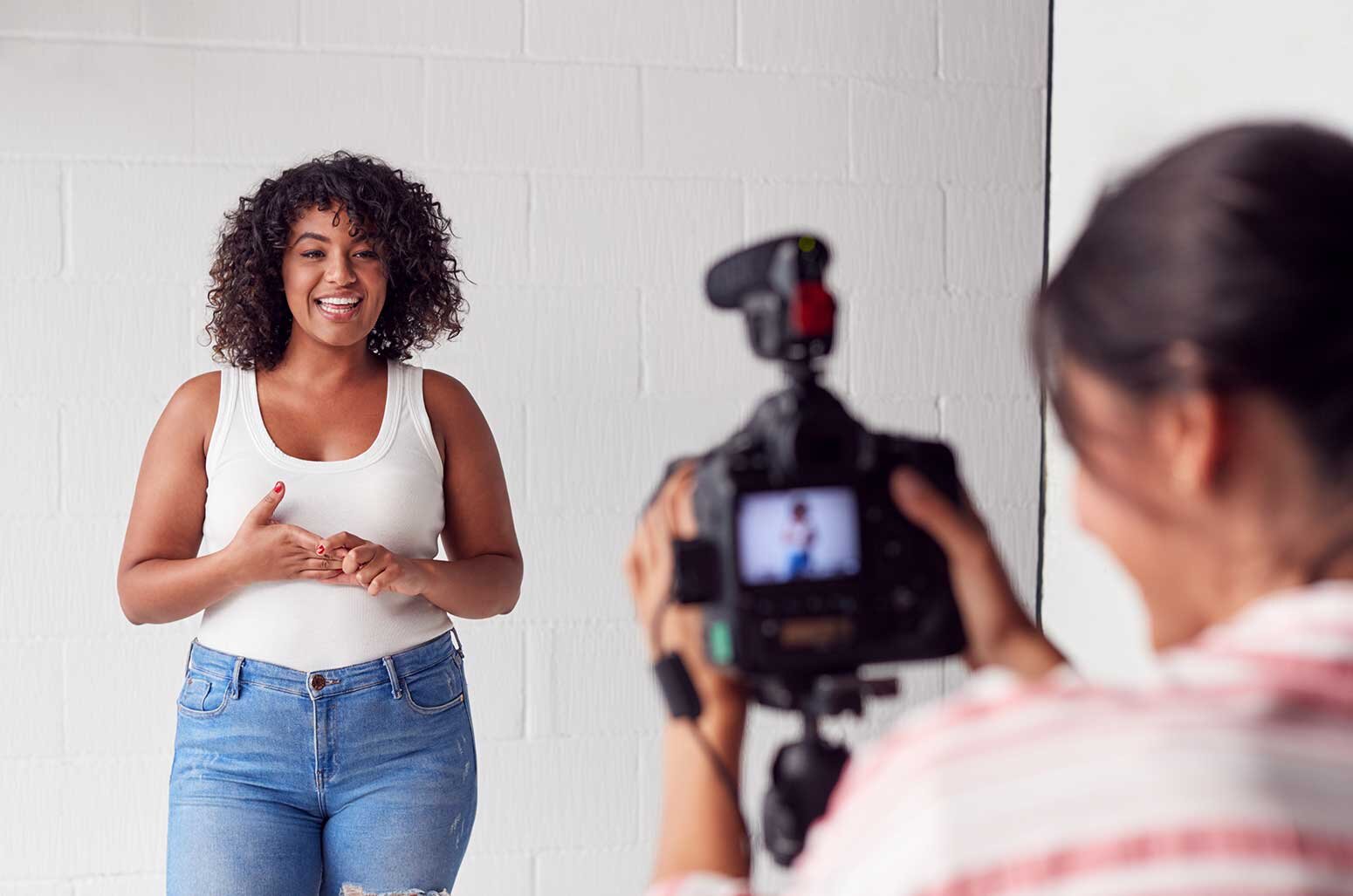3 Expert tips to help you present well on camera
Have you ever stared into a black box and began articulating your thoughts on a topic, while also smiling and naturally expressing your genuine personality?
No, right? Neither have I, no one does that.
But yet when it comes to creating our video productions, many people feel the need to do just that. As you can imagine, the result is lots of ums, ahs and even sweating! Most people don’t realise that talking to a camera is something that presenters on TV train for many years to do well.
Why does it matter if you’re a bit awkward on camera? Because, you are the most important aspect of the production. If the sound, lighting and camera are all looking good, but you the talent are feeling awkward or uncomfortable it will come through to your audience.
When we communicate with each other, we have all sorts of verbal and non-verbal cues that we bounce off of each other. It is a constant back and forth dialogue, It is spontaneous. If one person is struggling or stuttering, the other person often assists by saying something like “I agree with your point about…” Or simply by nodding in agreement and smiling.
When you talk directly at the camera, you have ZERO of these verbal and non-verbal cues. In fact it’s unlike any style of communication in our normal day to day lives. No wonder why people struggle with it.
I would compare it to being back at high school and having to do a speech, i’m sure you don’t want to remember that nightmare!
“I’ll be fine just looking at the camera.”
Often a client may say “we really want our audience to connect with our talent so it would be best if he looks directly into the lens.” Or “I’ll be fine just looking at the camera.”
In my opinion and experience however, seldom to people come across comfortable on camera when talking straight down the lens barrel.
No human connection- Looking unhappily at the camera.
Smiling as she talks to the interviewer.
THE GOOD NEWS.
The good news is that there are a few different film-making techniques to achieve exemplary on camera performances, meaning that you don’t have to be a trained presenter to still be a star!
1. The interview
This is a staple of documentaries and also coporate videos. Interviews can be conducted in a few different ways. The most common way it is performed is with the interviewer standing on one side of the camera. He or she then begins a dialogue with the interviewee. As the interviewer is standing close to the camera, we can see all the expressions on the subject without the challenge of them talking directly to the camera.
See the below photos for examples.
Interviewer standing off camera, to the side while the interviewee makes eye contact with her answering questions.
Interviewee happily looking at the interviewer and smiling as he talks.
2. Using a teleprompter
Teleprompters are great for maintaining eye contact with the camera and talking without making mistakes. If you have important information that you want to get across word for word then you can’t beat a teleprompter. For example, I have used a teleprompter when filming a video about a company who were sharing their end of year financial results. It was essential that they accurately shared the information for it’s shareholders and so a teleprompter was perfect for this.
Teleprompters work by using a piece of 50/50 mirror glass, which reflect the image from an ipad or even a phone. The camera sits behind the glass and records you talking without seeing the reflection of the text. A black piece of cloth is placed over the camera and glass so that no reflections or light flares are caused by the extra glass.
Teleprompters are what news presenters use so that they can read without looking away from the lens. The only risk with using a teleprompter is that your delivery sounds a little bit monotone or flat. This is because when reading, people sound different than compared with speaking. Just be aware of this and try to speak with lots of energy!
Here is a link to a handy little teleprompter and the best app for it and don’t forget the remote
3. Perform your script in short sentences
One other way to record your video looking directly at the camera is to break your script down into small segments. By speaking just one to two sentences at a time, you can focus on your delivery and not lose concentration by thinking about what is needed to say next.
When you come to edit your video, you can use relevant b-roll to cover the jump-cuts. Just make sure that you have enough b-roll to hide all of the sentence breaks.
You could also choose to leave these jump-cuts in your video as a stylistic choice. If your video is going to be a Vlog.
Each of these techniques has pros and cons but by using them, hopefully you can produce better, more authentic video as you won’t need to look into that scary black box that so many people get scared of!
Let me know what you think of these ideas and I would love to hear your thoughts in the comments :)
See you on the next one,
Nathan.





